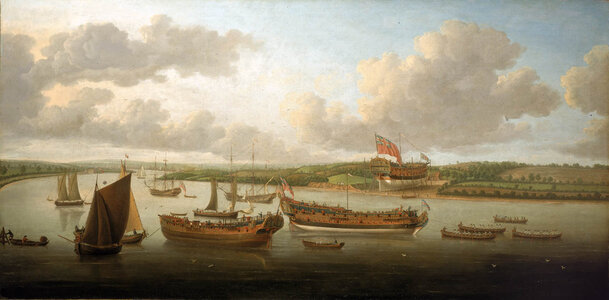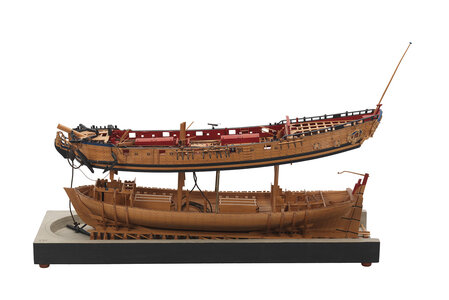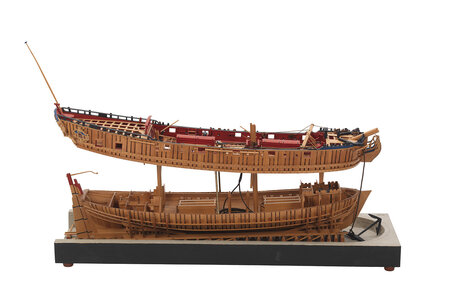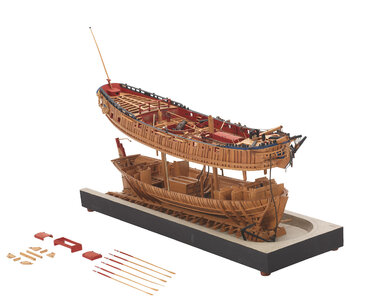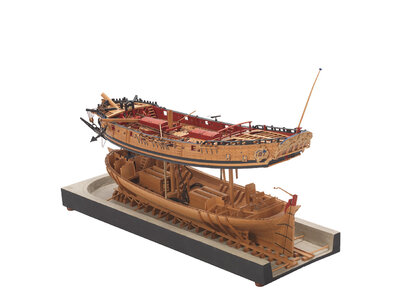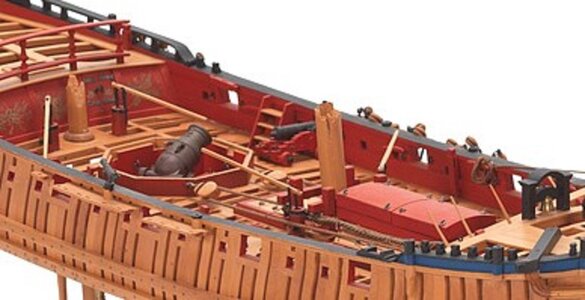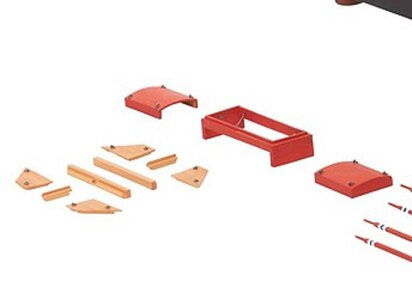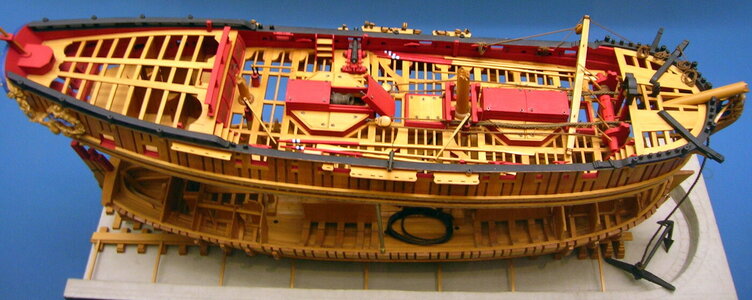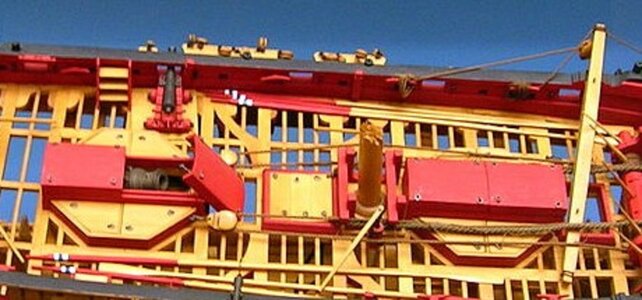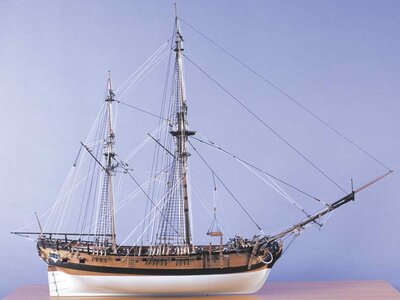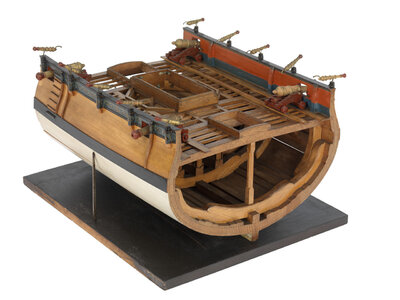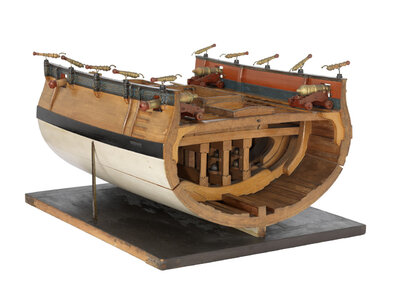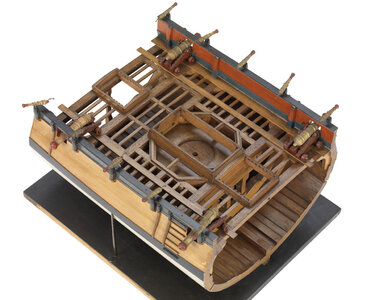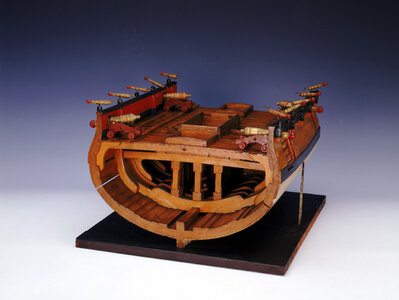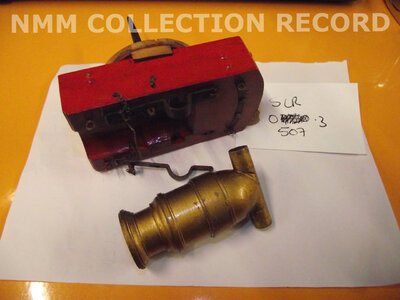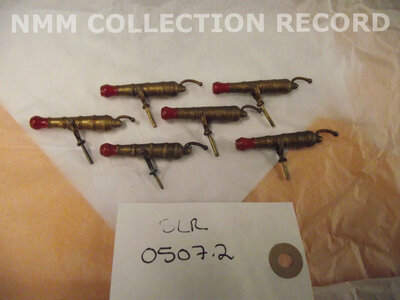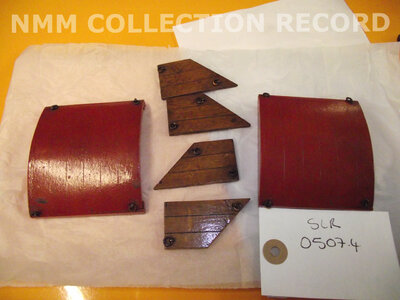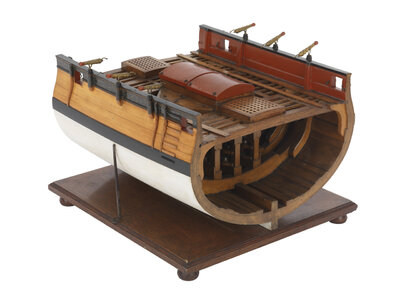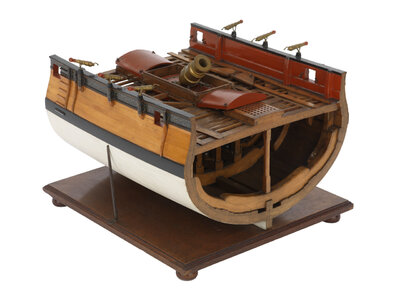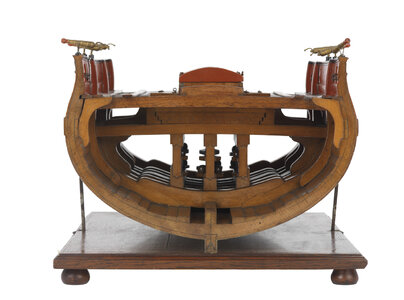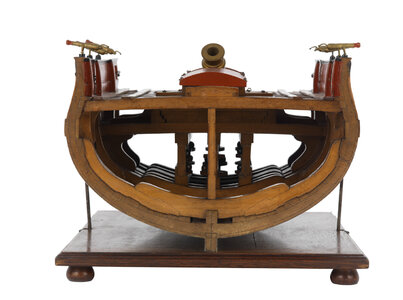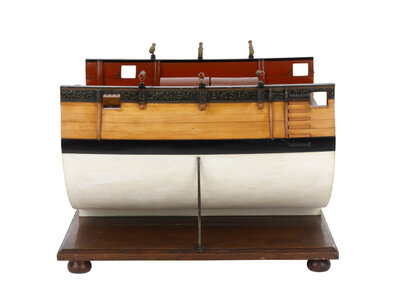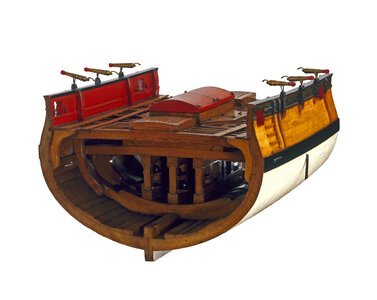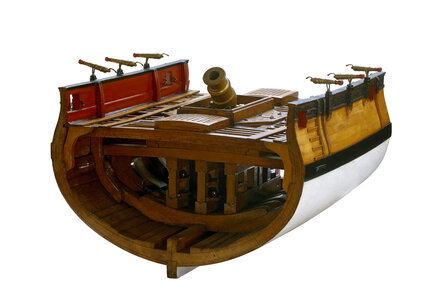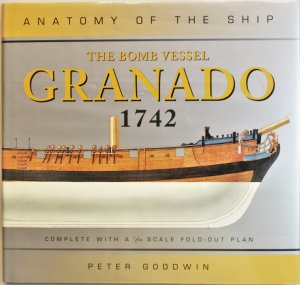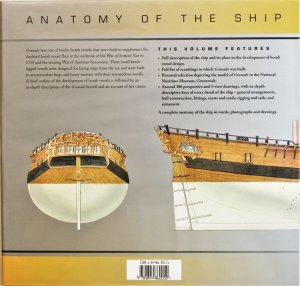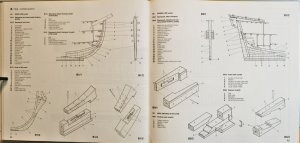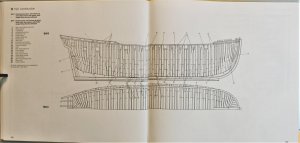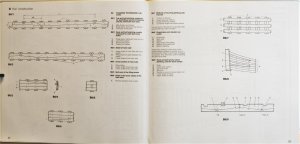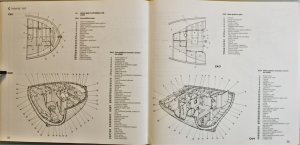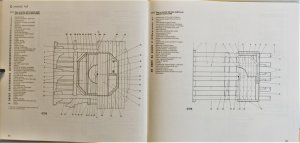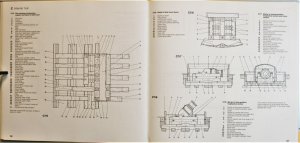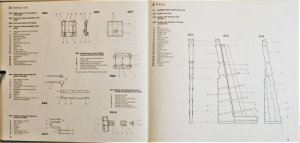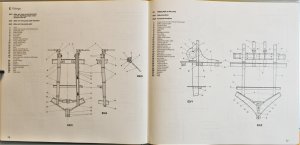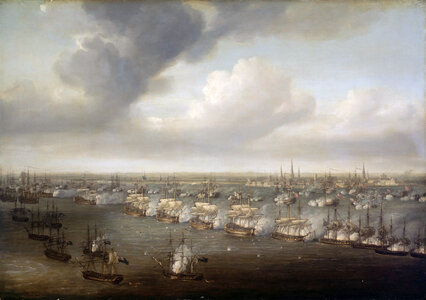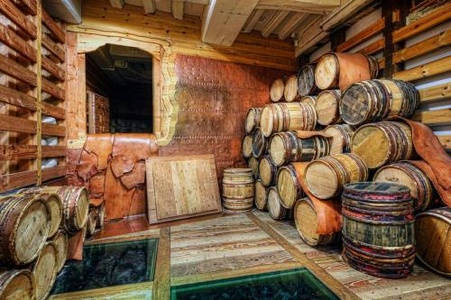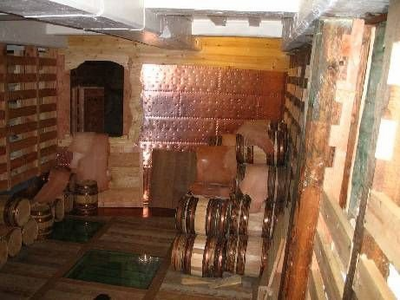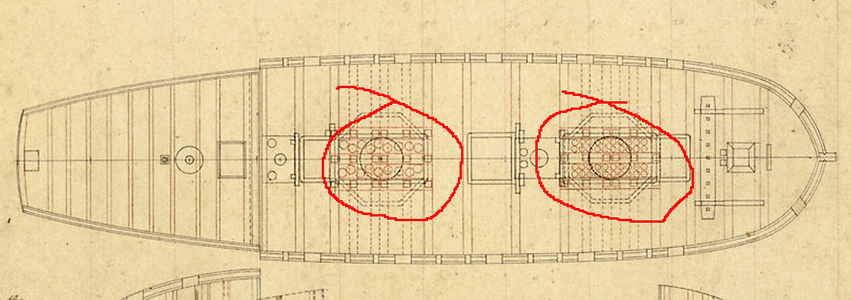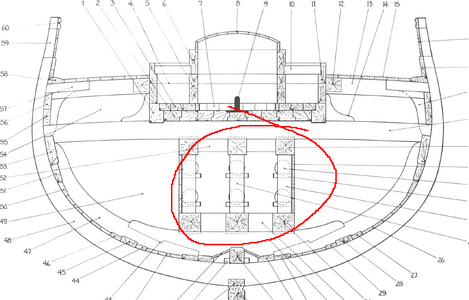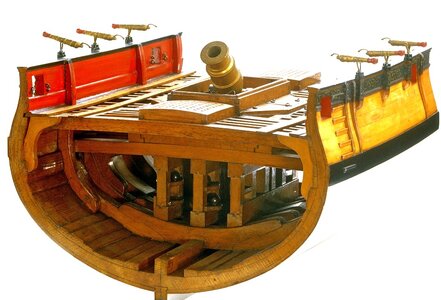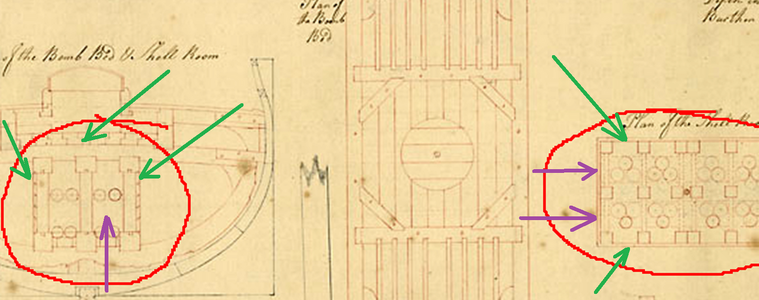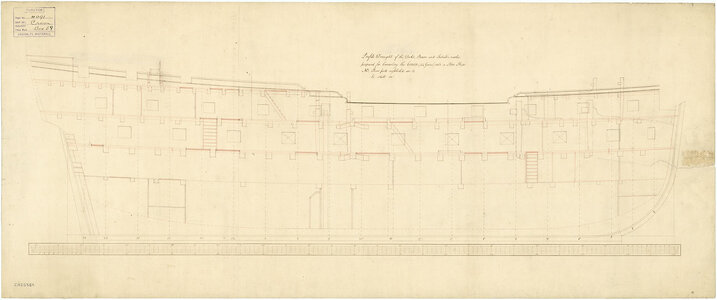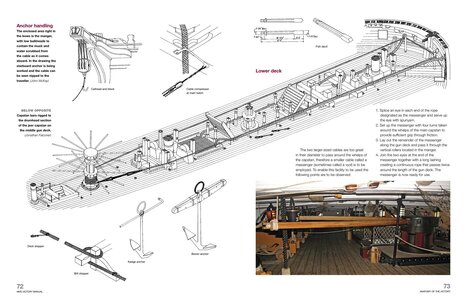Based on the big interest, which was produced by the new model kits devloped by CAF I decided to make a new topic,
showing the basic data and contemporary and new sources existing
HMS GRANADO (1742)
- bomb vessel -
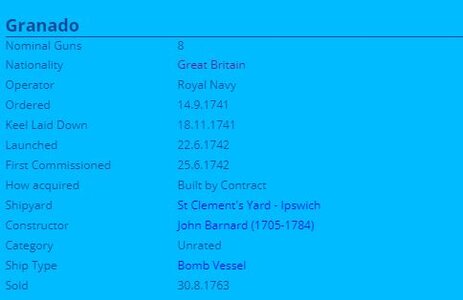
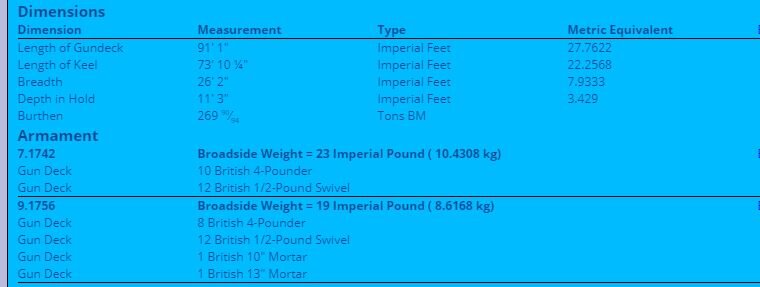
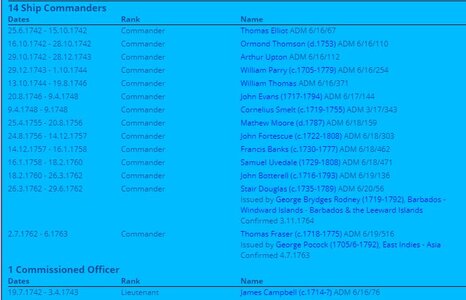
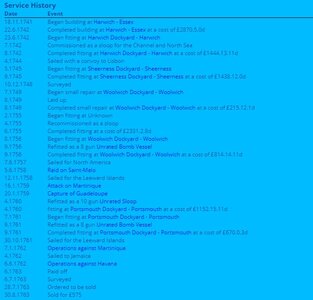
interesting is maybe also the fact, that the Constructor John Barnard built all together maybe 40 ships, tthe Granado was one of his first ships in the beginning of his career.
There are several contemporary drawings existing and available at the NMM

No Scale. A plan showing the body plan with stern board decoration, inboard profile with stern-quarter decoration and figurehead, and a longitudinal half-breadth plan for the 'Granado' (1742). This ship was a bomb vessel.
 www.rmg.co.uk
www.rmg.co.uk
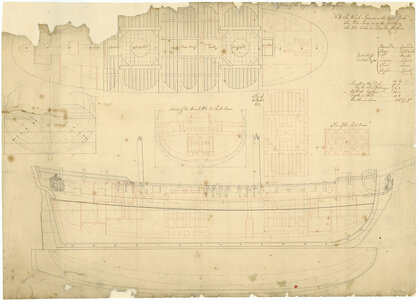
Scale: 1:48. Plan showing the body plan, sheer lines with inboard detail and sketch of figurehead, and basic longitudinal half-breadth for Comet (1742); Terror (1742); Granado (1742); Firedrake (1742); Mortar (1742); Serpent (1742), all 8-gun, 2 mortar, Bomb Vessels. The plan includes the upper deck with platforms and hold superimposed, and a section and plan of the bomb bed and shell room.
Copies were sent in October 1741 to the merchant yards for the above ships.
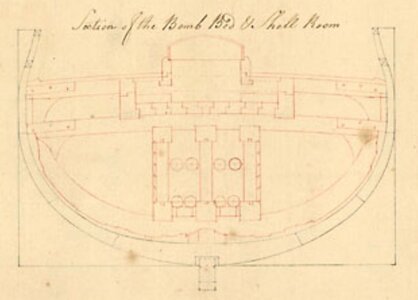
Here one excerpt showing the cross section
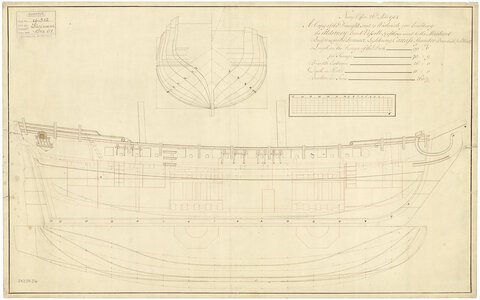
Scale: 1:48. A plan showing the body plan, sheer lines with inboard and external detail, and a longitudinal half-breadth with mortar bed details. This plan was used to contstruct such vessels as the 'Alderney' (1734), 'Furnace' (1740), 'Lightning' (1740), 'Carcass' (1740), 'Thunder' (1740), 'Basilisk' (1740), 'Blast' (1740), 'Firedrake' (1742), and all bomb vessels.
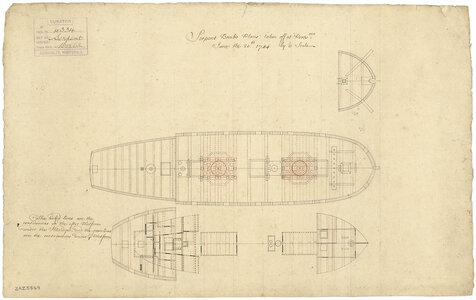
Scale: 1:96. A plan showing the forecastle, upper deck, and fore and aft platforms for the 'Serpent' (1742), a bomb vessel, as taken off at Portsmouth Dockyard.
 www.rmg.co.uk
www.rmg.co.uk
Interesting could be also the drawing of the predecessors Basilisk (1740); Blast (1740) Carcass (1740) Furnace 1740 Lightning 1740 Thunder 1740
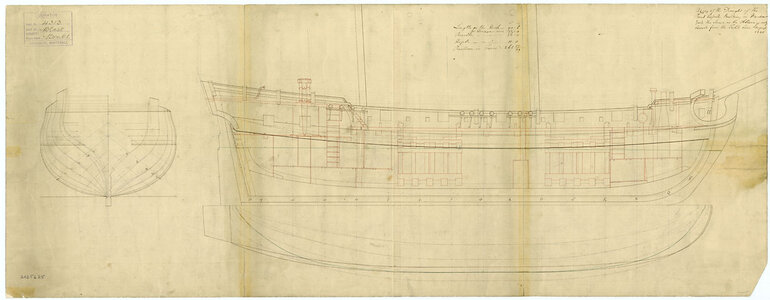
 www.rmg.co.uk
www.rmg.co.uk
especially also the drawings of the HMS Furnace
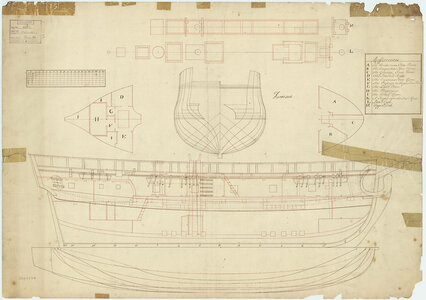
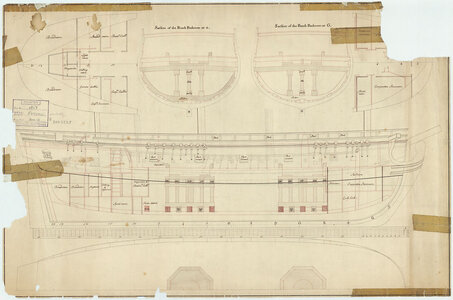
in Scale: 1:48. Plan showing the body plan, inboard profile, longitudinal half-breadth, upper and lower deck fittings, and fore & aft platforms for Furnace (1740), a Bomb Vessel, as converted for Arctic exploration in 1741. The reverse has 'N. West Passage' in ink.
showing the basic data and contemporary and new sources existing
HMS GRANADO (1742)
- bomb vessel -




interesting is maybe also the fact, that the Constructor John Barnard built all together maybe 40 ships, tthe Granado was one of his first ships in the beginning of his career.
British bomb vessel 'Granado' (1742)
British bomb vessel 'Granado' (1742). Dates of service, name changes, previous and next incarnations, dimensions, armament, commanders, officers and crewmen, actions, battles, sources
threedecks.org
There are several contemporary drawings existing and available at the NMM

No Scale. A plan showing the body plan with stern board decoration, inboard profile with stern-quarter decoration and figurehead, and a longitudinal half-breadth plan for the 'Granado' (1742). This ship was a bomb vessel.
'Granado' (1742) bomb vessel | Royal Museums Greenwich

Scale: 1:48. Plan showing the body plan, sheer lines with inboard detail and sketch of figurehead, and basic longitudinal half-breadth for Comet (1742); Terror (1742); Granado (1742); Firedrake (1742); Mortar (1742); Serpent (1742), all 8-gun, 2 mortar, Bomb Vessels. The plan includes the upper deck with platforms and hold superimposed, and a section and plan of the bomb bed and shell room.
Copies were sent in October 1741 to the merchant yards for the above ships.

Here one excerpt showing the cross section

Scale: 1:48. A plan showing the body plan, sheer lines with inboard and external detail, and a longitudinal half-breadth with mortar bed details. This plan was used to contstruct such vessels as the 'Alderney' (1734), 'Furnace' (1740), 'Lightning' (1740), 'Carcass' (1740), 'Thunder' (1740), 'Basilisk' (1740), 'Blast' (1740), 'Firedrake' (1742), and all bomb vessels.

Scale: 1:96. A plan showing the forecastle, upper deck, and fore and aft platforms for the 'Serpent' (1742), a bomb vessel, as taken off at Portsmouth Dockyard.
'Serpent' (1742) bomb vessel | Royal Museums Greenwich
Interesting could be also the drawing of the predecessors Basilisk (1740); Blast (1740) Carcass (1740) Furnace 1740 Lightning 1740 Thunder 1740

Lines & Profile | Royal Museums Greenwich
especially also the drawings of the HMS Furnace


in Scale: 1:48. Plan showing the body plan, inboard profile, longitudinal half-breadth, upper and lower deck fittings, and fore & aft platforms for Furnace (1740), a Bomb Vessel, as converted for Arctic exploration in 1741. The reverse has 'N. West Passage' in ink.





